5 girls and one bride-to-be. A hand luggage within the 8kg. Metal detector, antidrug checks, coffee on the go and run to the gate. Ready for take off. Destination unveiled: Prague.
3 intense days to celebrate my sister’s bacelorette party, discovering Prague, the capital city of Czech Republic since 1993. Soul of the bohemian culture, “City of a hundred Spires” or “Golden City”, if you prefer. I come back in Prague after more then 10 years. Ready to re-descover this little pearl, which unfortunately I had almost forgotten about. I think that a weekend is too short to be able to fully enjoy the city, but in this trilogy of posts I’d like to suggest you an itinerary in 3 days to visit the spots you definitely must visit.
Be aware! We’ll walk a lot, so train yourself before leaving!
Itinerary
Day 1:
- The Dancing House;
- Strolling along the Vltava River;
- Old City Square (Staroměstské náměstí);
- Clementinum.
Day 2:
- Charles Bridge;
- Malá Strana;
- Castle of Prague;
- Petřín Tower and the Mirror Maze Museum.
Day 3:
- Josefov: the Jewesh quarter;
- Wenceslas Square;
- Jerusalem Synagogue.
Day 1: a full immersion in the city
The first day has a late start. Landed at Prague airport at 13, we have reached our hotel at 14.30 (I’ll give you some tips about Prague’s transportation in a dedicated post). Therefore, we decide to dive immediately into the city. We catch the subway, the B line heading to Karlovo náměstí, which should be not far from our first goal: the dancing house.
Emmaus Monastery (Emauzské Opatství)
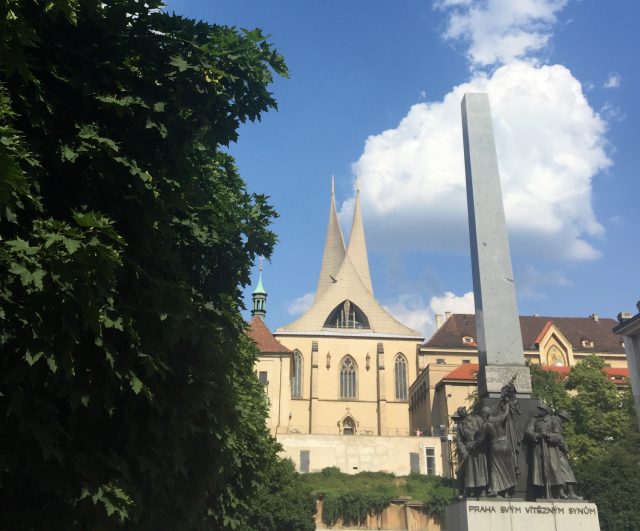
Going out from the subway, a bit because of the hot wheather, a bit because of the signs completely in Czech, we end up taking the wrong turn and we wind up in front of the Emmaus Monastery (Emauzské Opatství), a very unique-shaped church.
The monastery was founded in 1347 and today it is still run by three Benedectine monks. However, during the Second World War it was seized by the Gestapo and the monks were sent to Dachau contentration camp. The dome was bombed by the Americans soldiers and then buildt again in the 60s.
From the terrace of the monastery you can enjoy a pretty nice view of the Czech capital. Worth a quick visit!
The Dancing House and the Vltava River
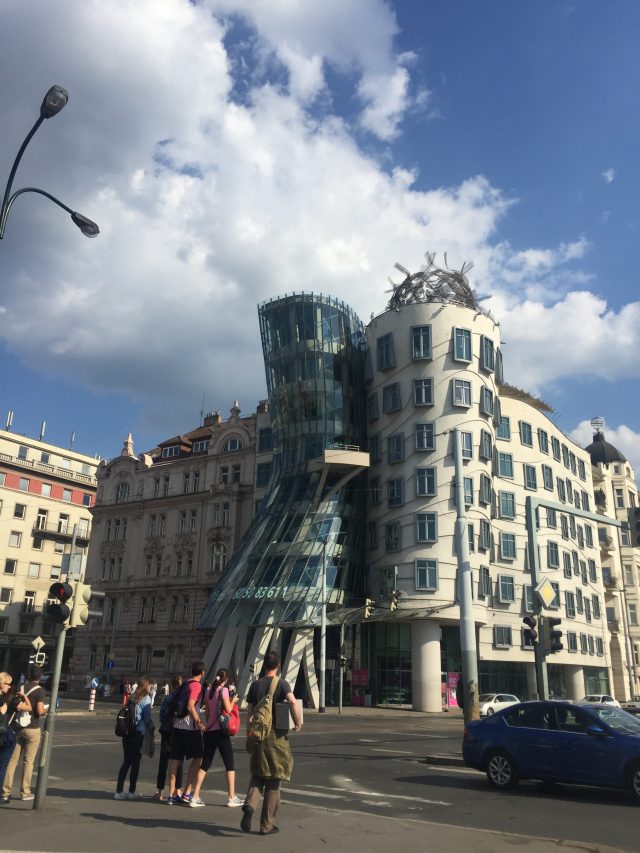
So, following carefully the map, we go back to our starting point, this time we take the right way toward our goal: the Dancing House.
The building, which should remind a pair of dancers, hosts offices, a French restaurant and some temporary exhibitions. It is also possible to go up to the top and have a wide view on Prague.
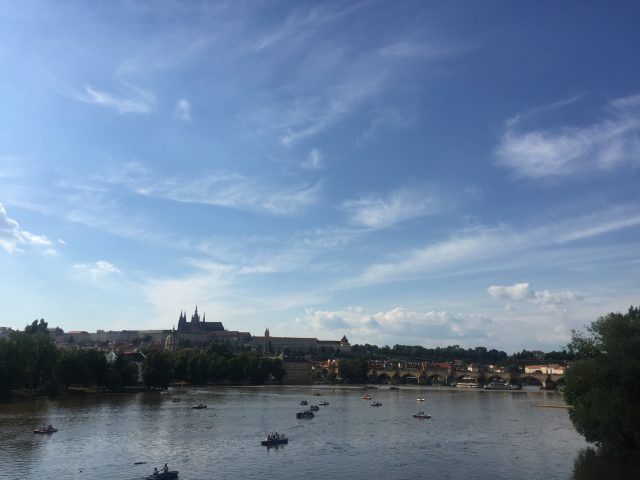
We didn’t go up, but we continued our stroll along the Vltava River, enjoying the sun and echanted by the beauty and elegance of the Baroque buildings. We admired the huge National Teatre and took some pictures with the traditional streetcars running along the street.
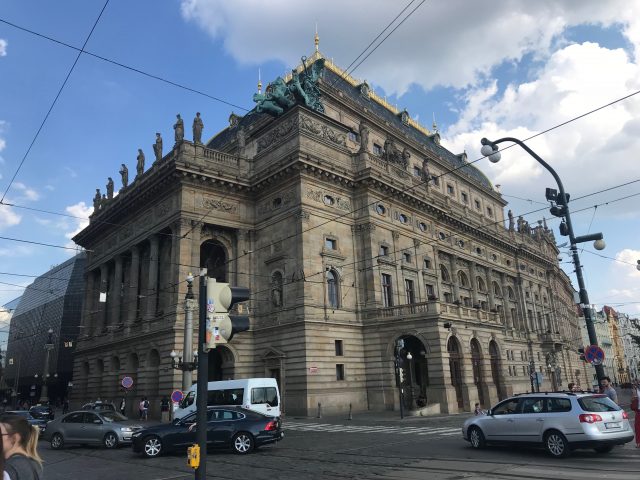
Then, near the Prague Beer Museum, we entered into the Old Town, Staré Město.
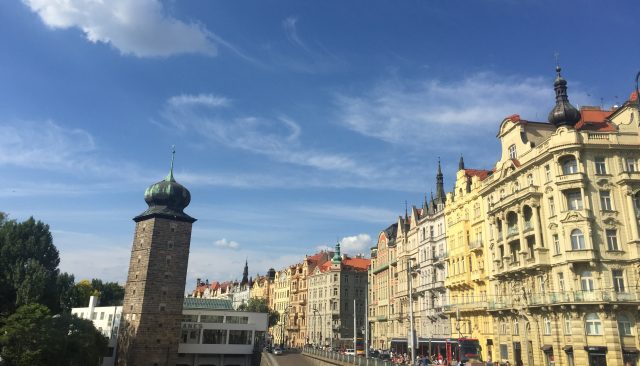
Staré Město (Old Town)
After a quick pit stop at “Fat Cat” café, our exploration of the Old Town (Staré Město) had its start. We loved getting lost in the narrow streets full of traditional restaurants, souvenirs shops and marionette shops. In particular, the marionette is a very ancient Czech tradition and, even nowadays, it is possible to watch many shows, especially on weekends.
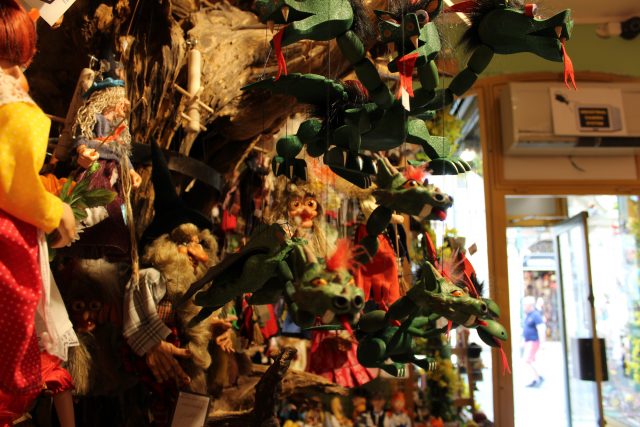
Old Town Square (Staroměstské náměstí)
The heart of the Staré Město is the Old Town Square, symbol of Prague and one of the most visited tourist spot of the city.
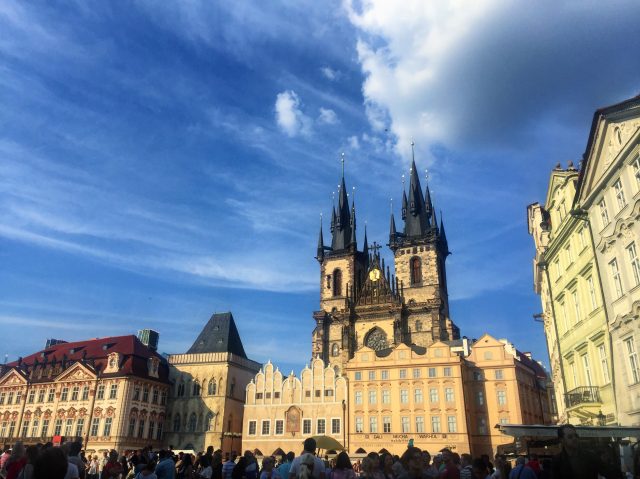
Here we can find the Church of Mother of God before Týn, charachterized by its two bell towers and its white interiors; St. Nicholas Church; the Old Town Hall famaous for the astronomical clock (unfortunately under renovation!); in the end a lot of Romanesque and Gothic building, hosting hotels.
The Square is always full of (both strange and normal) people and you can also enjoy some shows by steet artists.
Clementium
The Clementium is one of the hugest historical complex of Europe. I have to be honest, but we found it by chance on the way back to the subway station.
It was built during the second part of 1500 and it host the most ancient Jesuit Church of Prague, the St. Clement convent (from which derives the name of the complex)and the University Library. From 1700 it’s also the headquater of the Prague Klementium meteorological observatory.
As it’s usual in almost all of the churches in Prague, at night you can attend some Baroque music concerts. A good way to admire the architecture and the frescos and relax yoursefl a bit!
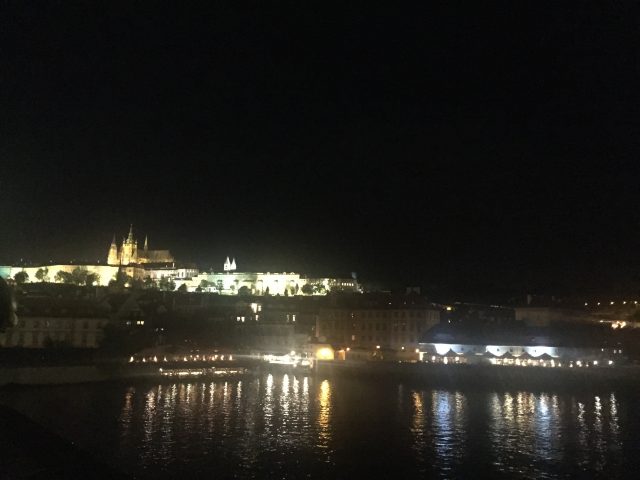
Exhausted from the day and especially from the unusual hot wheather, we come back to out hotel, ready for a deep sleep. The second day will put to the test our legs and feet! Stay tuned!

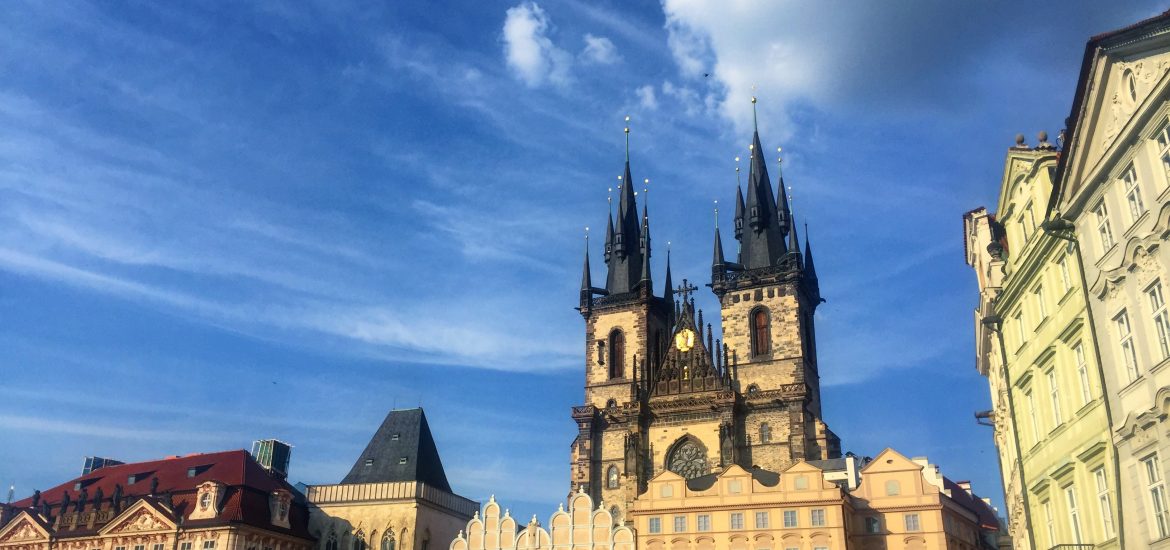
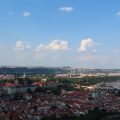
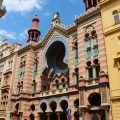
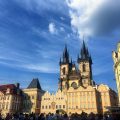
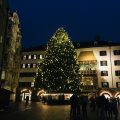
Prague is wonderful. Thank you so much for sharing youe experience.
Thank you very much for the comment! I’m glad you’ve appreciated it! 🙂
nice post
Thank you!